-
ICMag with help from Landrace Warden and The Vault is running a NEW contest in November! You can check it here. Prizes are seeds & forum premium access. Come join in!
You are using an out of date browser. It may not display this or other websites correctly.
You should upgrade or use an alternative browser.
You should upgrade or use an alternative browser.
Absolute Amber from Banana Silver Ladyboys
- Thread starter jump117
- Start date
AA from seeded buds matter, part two
AA from seeded buds matter, part two
Buds matter in butane.
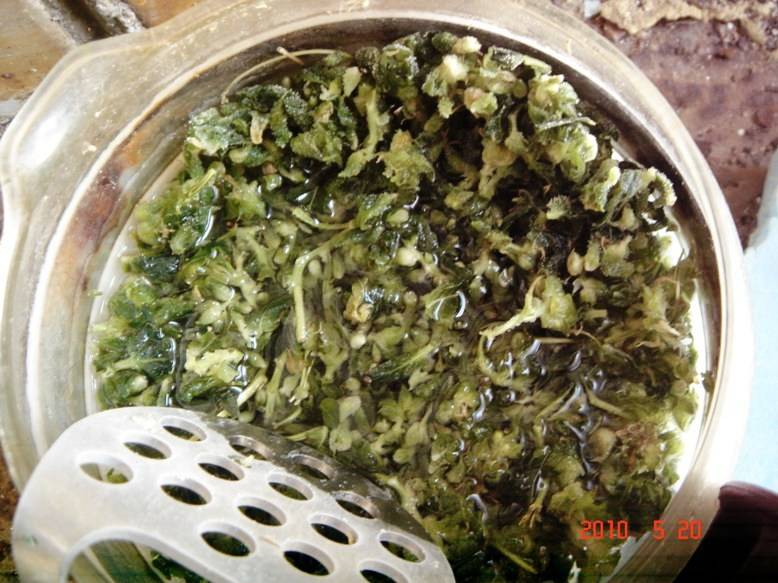
Extraction tea-pot, filter, butane oil-cake, butane evap.
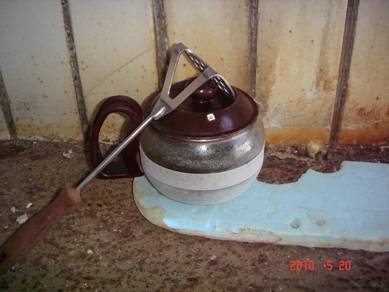
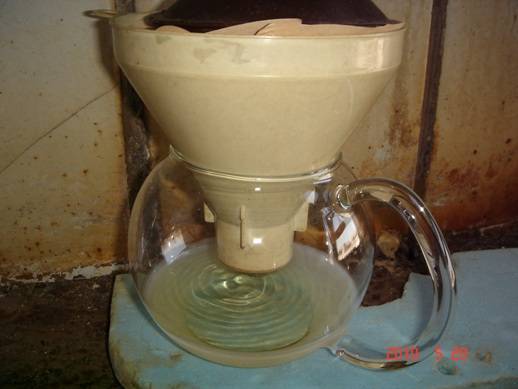
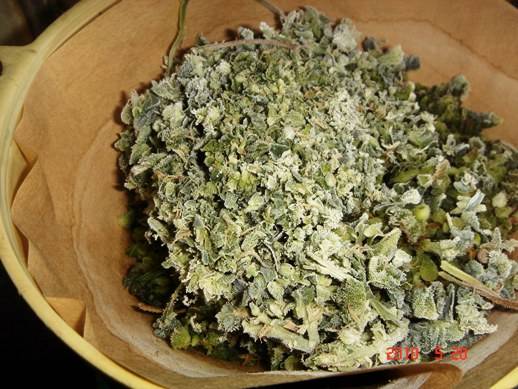
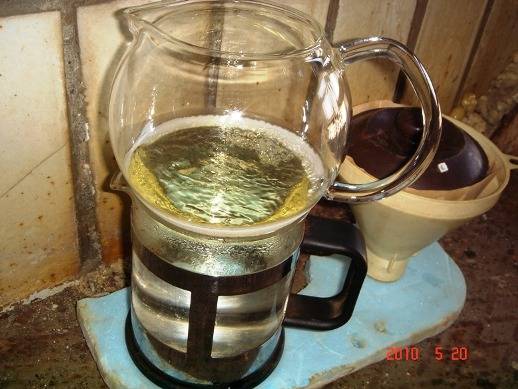
Concrete
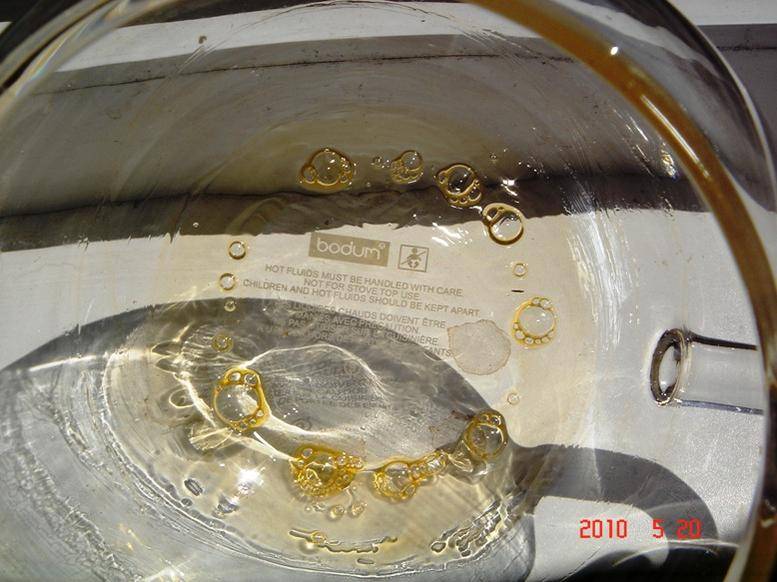
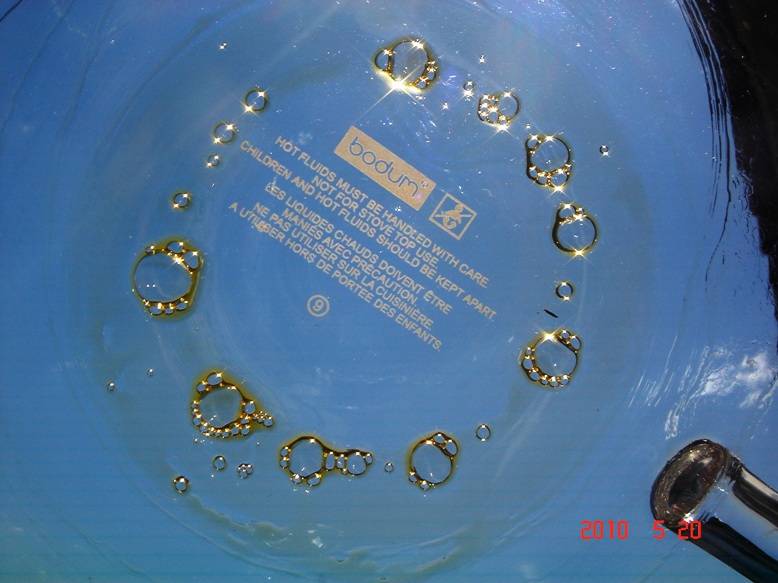
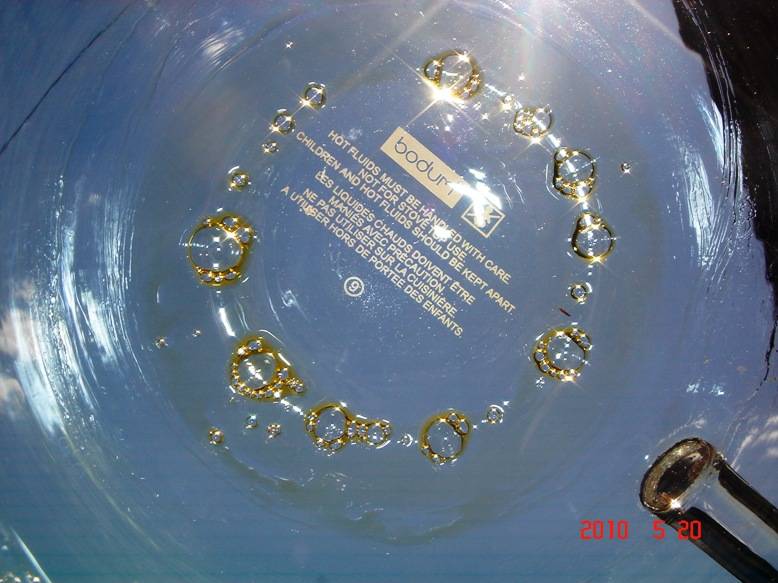
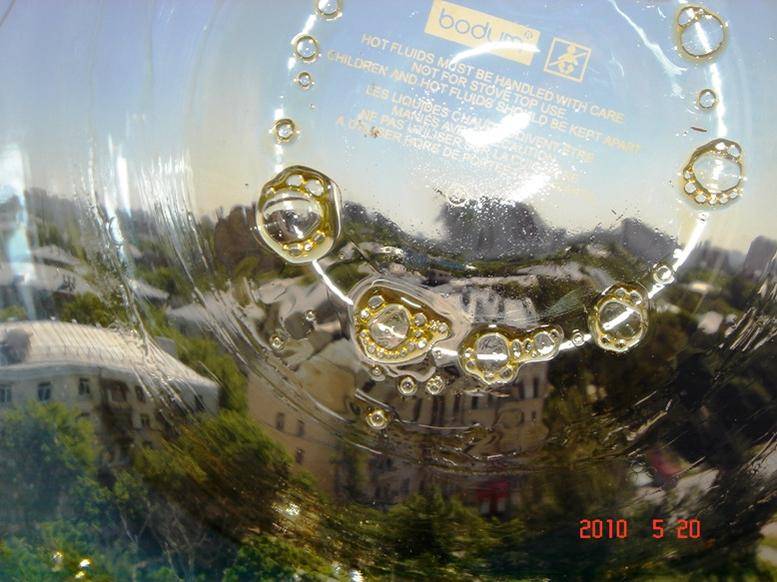
Flakes in ethanol, filtration, slime.
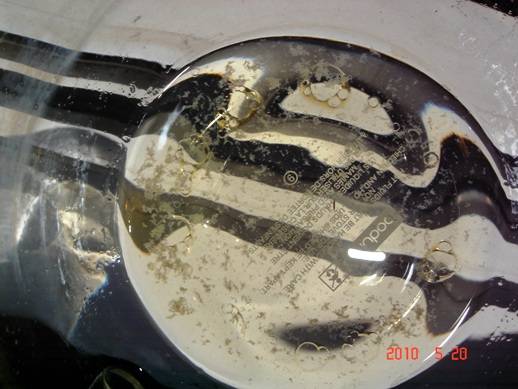
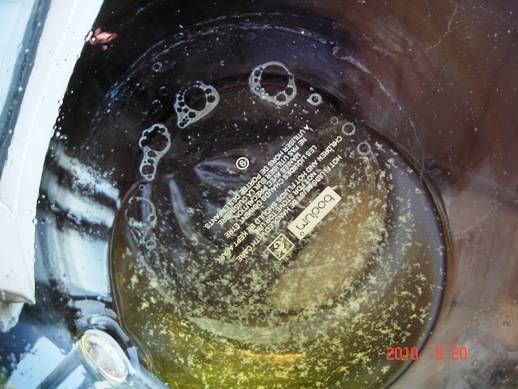
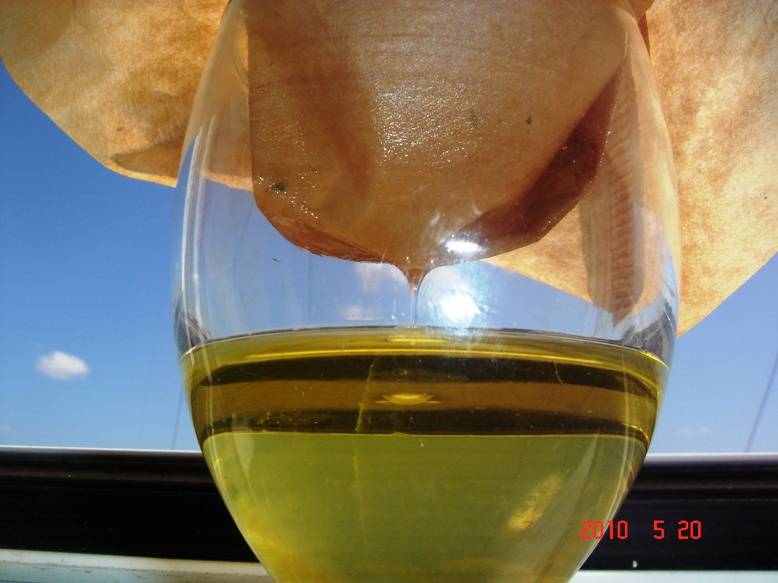
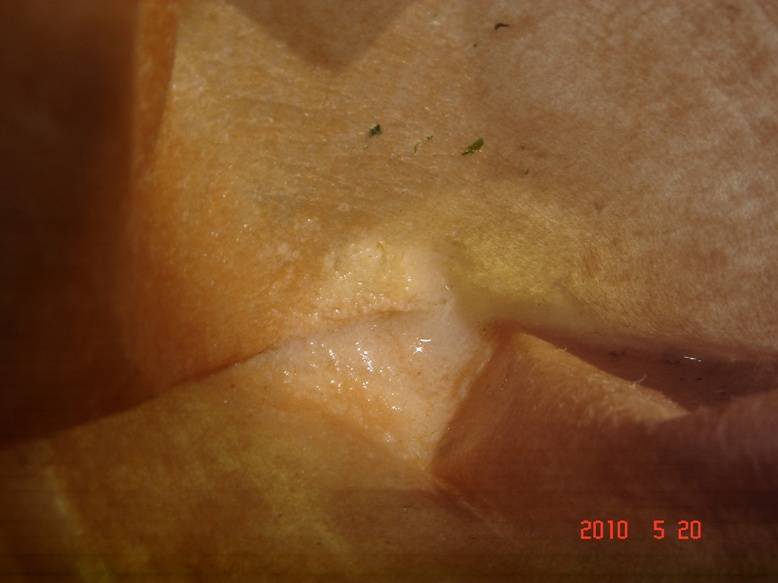
After filtration the solution was shared half-and-half. 30/2= 15 ml.
First half goes to final distillation and collecting.
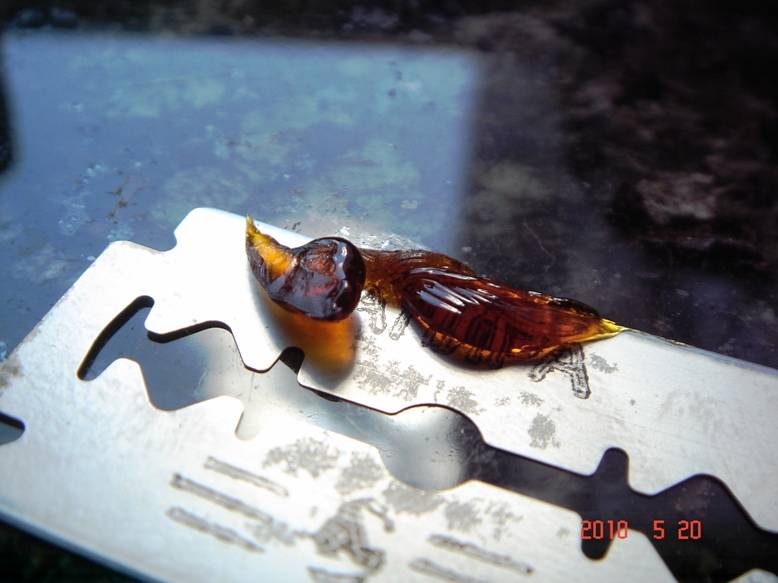
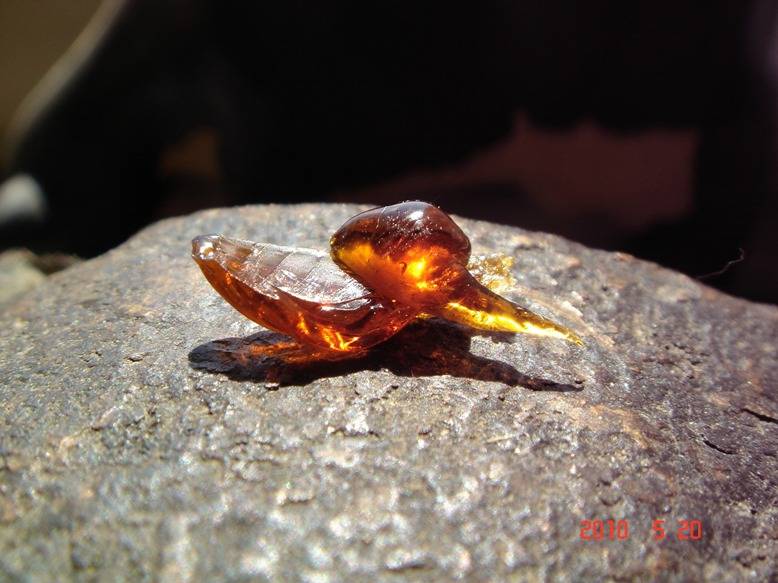
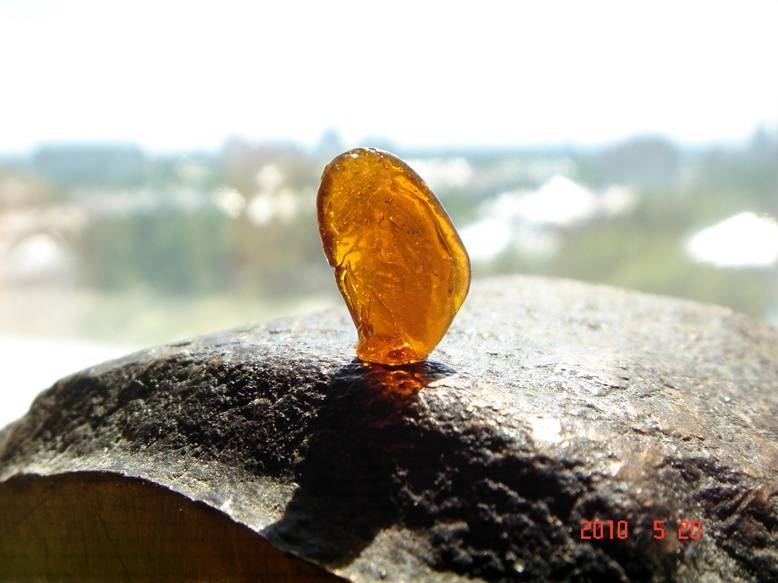
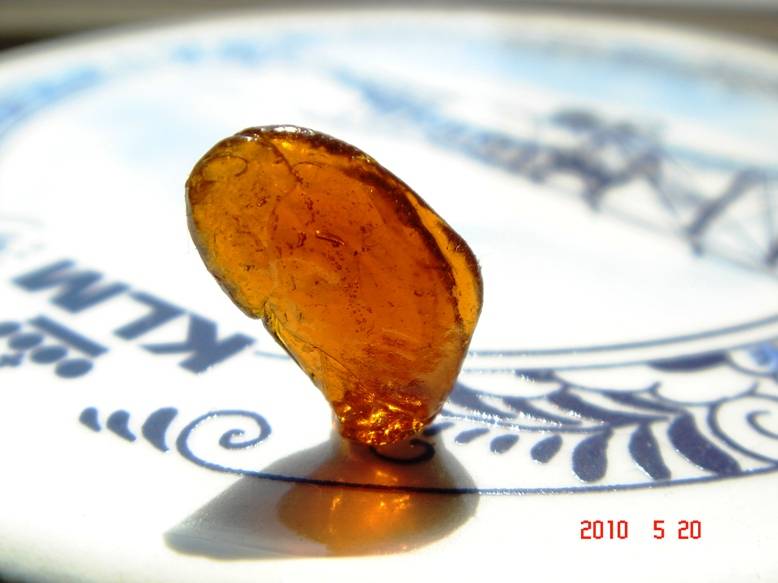
Second half goes to freeze -20°C for four hours before filtration, distillation and collecting.
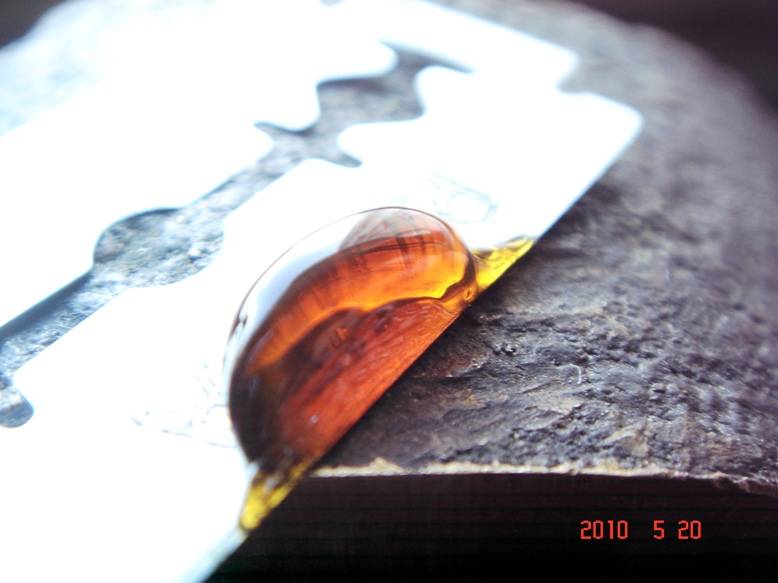
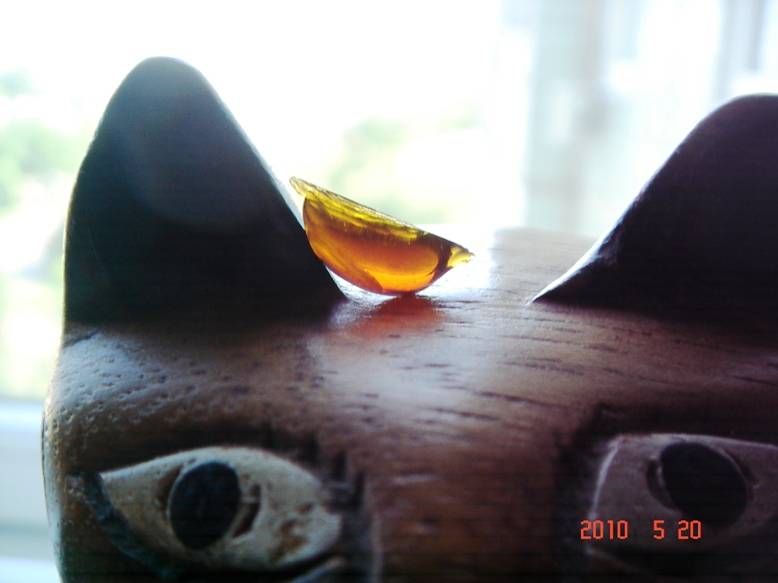
With or without "winterization" in my opinion they are the same. On the last picture a piece from previous session added (left).
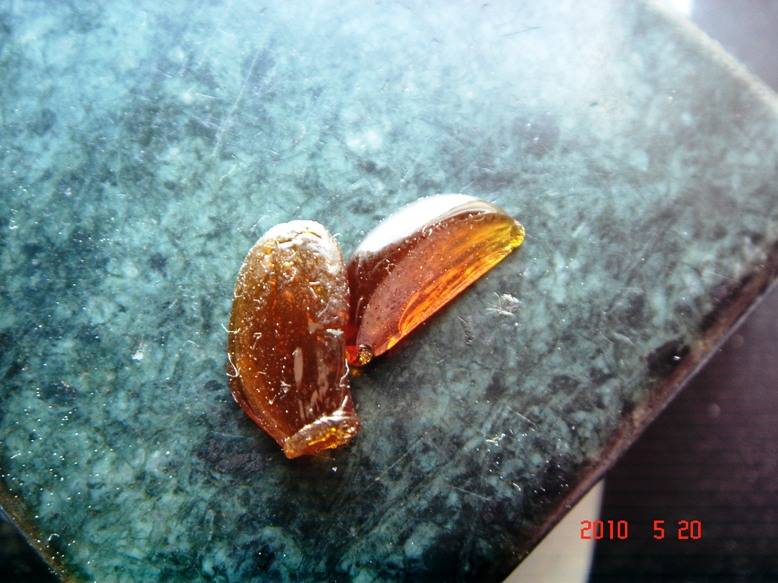
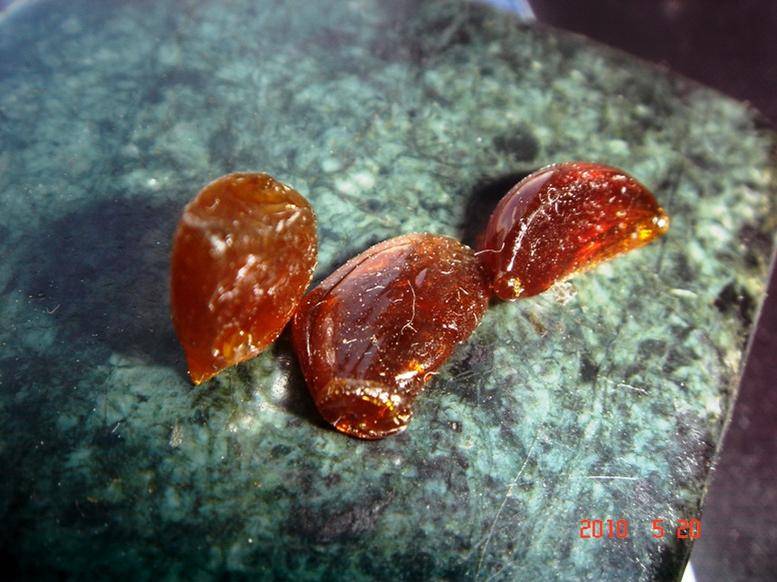
Hey ICMaggers, to me it is amazing, why no one will repeat this? Go ahead, its easy!
AA from seeded buds matter, part two
Buds matter in butane.
Extraction tea-pot, filter, butane oil-cake, butane evap.
Concrete
Flakes in ethanol, filtration, slime.
After filtration the solution was shared half-and-half. 30/2= 15 ml.
First half goes to final distillation and collecting.
Second half goes to freeze -20°C for four hours before filtration, distillation and collecting.
With or without "winterization" in my opinion they are the same. On the last picture a piece from previous session added (left).
Hey ICMaggers, to me it is amazing, why no one will repeat this? Go ahead, its easy!
organicgreen0
New member
Hey guys,
Some good stuff in this thread. I love the way the absolute product looks.
I have one quick question. Do you think there is any significant difference between using ethanol for the "secondary extraction" and filtering verse using isopropyl alcohol?
I did my BHO tube style extraction directly into a container with a small amount of Iso covering the bottom to help with purging of the butane at ~ 85deg F (29) for about an hour. I then filter the iso through activated charcoal and a coffee filter. This liquid then is evaporated at 85F for 24 hours until all the iso is gone.
Now i am thinking of doing dissolution into ethanol and freezing for 24hrs then doing another filter and evap.
But if we think the iso works just as well then ill stick with that. It is much cheaper then 180 proof ethanol.
Some good stuff in this thread. I love the way the absolute product looks.
I have one quick question. Do you think there is any significant difference between using ethanol for the "secondary extraction" and filtering verse using isopropyl alcohol?
I did my BHO tube style extraction directly into a container with a small amount of Iso covering the bottom to help with purging of the butane at ~ 85deg F (29) for about an hour. I then filter the iso through activated charcoal and a coffee filter. This liquid then is evaporated at 85F for 24 hours until all the iso is gone.
Now i am thinking of doing dissolution into ethanol and freezing for 24hrs then doing another filter and evap.
But if we think the iso works just as well then ill stick with that. It is much cheaper then 180 proof ethanol.
Slimm,
ethanol solution stored in the dark place at room temperature had changed its color from light yellow to dark amber in 5 months.
Within 4 months several ethanol solutions in the freezer at -20°C have not changed in appearance.
I have never stored ambers for so long, they always go to heaven young. I believe that in the freezer they can be kept forever.
gunnaknow, I've got it.
organicgreen0,
I have never used ISO and never learned its properties.
Note that the second solvent is required in very small quantities, it can soften the financial shock of the price of ethanol.
ethanol solution stored in the dark place at room temperature had changed its color from light yellow to dark amber in 5 months.
Within 4 months several ethanol solutions in the freezer at -20°C have not changed in appearance.
I have never stored ambers for so long, they always go to heaven young. I believe that in the freezer they can be kept forever.
gunnaknow, I've got it.
organicgreen0,
I have never used ISO and never learned its properties.
Note that the second solvent is required in very small quantities, it can soften the financial shock of the price of ethanol.
gunnaknow
Active member
Hey guys,
Some good stuff in this thread. I love the way the absolute product looks.
I have one quick question. Do you think there is any significant difference between using ethanol for the "secondary extraction" and filtering verse using isopropyl alcohol?
I did my BHO tube style extraction directly into a container with a small amount of Iso covering the bottom to help with purging of the butane at ~ 85deg F (29) for about an hour. I then filter the iso through activated charcoal and a coffee filter. This liquid then is evaporated at 85F for 24 hours until all the iso is gone.
Now i am thinking of doing dissolution into ethanol and freezing for 24hrs then doing another filter and evap.
But if we think the iso works just as well then ill stick with that. It is much cheaper then 180 proof ethanol.
ISO should work fine for this. Most waxes are poorly dissolved in alcohols in general. ISO generally has to be heated to high temperatures to dissolve much wax.
Slimm
Member
Great thread jump. I plan to sit down with a big bag of bud and work until I reproduce your results.
How is Honey oil, which behaves as a thick liquid at room temp, different from the solid-at-room-temp absolutes being pictured in this thread? What gives the oil a malleable consistency? Is this due to water left behind from the alcohol?
If one wanted to create a decarboxilated absolute, at what point in the process would this be done? I assume after the etoh wash and filter? Also how would one heat the solution so a minimum of the terpenes and cannabinoids are lost in the process.
How is Honey oil, which behaves as a thick liquid at room temp, different from the solid-at-room-temp absolutes being pictured in this thread? What gives the oil a malleable consistency? Is this due to water left behind from the alcohol?
If one wanted to create a decarboxilated absolute, at what point in the process would this be done? I assume after the etoh wash and filter? Also how would one heat the solution so a minimum of the terpenes and cannabinoids are lost in the process.
Slimm
Member
Gunna,
Here's a qoute from your post in the thread referenced above.
Butaflor is a registered name (P Robertet & Cie) given to a series of highly concentrated perfume materials produced by extraction with butane at subnormal temperatures. The solvent is recovered be evaporation at room temperature (boiling point of butane is -0°.50C). The low extraction temperature and the selected solvent result in a pale-coloured, almost wax free and terpenless product. The method is particularily useful and advantageous when applied to very delicate or heat sensitive botanical materials, e.g. lilac flowers. jasmin, rose, lily of the valley (muguet), orange flowers etc. Certain staple materials are also treated in this method, e.g. ginger rhizomes. It should be kept in mind that not all Butaflors are completely alcohol solvent.
My concern is that with low extraction temps less terpenes are extracted - terpenes are essential to the effect of the product. Is another wash of the source material needed, with another solvent, to pick up the terpenes?
Waxes, fats, oils work as a softener. Water evaporates together with ethanol from azeotrope solution.What gives the oil a malleable consistency? Is this due to water left behind from the alcohol?
I suppose this would be done after final evaporating as an additional process.If one wanted to create a decarboxilated absolute, at what point in the process would this be done? I assume after the etoh wash and filter? Also how would one heat the solution so a minimum of the terpenes and cannabinoids are lost in the process.
It seems impossible to keep terpenes after decarboxylation, it requires the temperature much higher then many terpenes may withstand.ethanol is evaporated at 78C (173F) on double boiler,
they say this temperature is not safe to terpens, many of them fly away others oxidize into another forms,
vacuum would help to save virgin terpenes in evaporation under 50C (122F),
on the other hand in terms of THC content its better 20-30 minutes at 122C (252F).
organicgreen0
New member
Thanks for the replies.
I am just trying to get the product clean as possible of anything that will not nicely dissolve into my glycerin/propylene glycol mixture.
I am just trying to get the product clean as possible of anything that will not nicely dissolve into my glycerin/propylene glycol mixture.
gunnaknow
Active member
Gunna,
My concern is that with low extraction temps less terpenes are extracted - terpenes are essential to the effect of the product. Is another wash of the source material needed, with another solvent, to pick up the terpenes?
Yes, there may be some truth to that. However, butane extracts the cannabinoids effectively, which are terpenoids, so it should be able to extract terpenes effectively also. The typical materials used in making butaflors are fairly low in terpenes compared to cannabis. There aren't many plants that produce as much aroma as cannabis. Butane may extract less of the terpenes than ambient temperature non polar solvents but when the terpene content of the plant material is so high, a large amount will make it's way into the extract. You also have to take into account the fact that butane can be purged off at low temps and quickly, which allows the BHO to hold on to more of it's terpene content than oleoresin made with other solvents.
Terpenes may modulate the experience of the high to some degree but that doesn't necessarily mean that more of them will increase the effect. However, if you want to extract the maximum amount of terpenes then you could do a second extraction with an ambient temperature solvent. You'd also want to use fresh plant material, as many of the more volatile terpenes evaporate during drying. The first extraction on fresh plant material would need to be with butane because an ambient temperature solvent would need heat or a lengthy purge time, which would drive off the most volatile terpenes.
gunna
Ok, gave this a try last night, my tech varied in a couple of places, but the outcome I give 2 thumbs up  Here is the rundown, I might break the camera out, if not for sure next time.
Here is the rundown, I might break the camera out, if not for sure next time.
Took approx 2 gms of 2nd run BHO of which both were fairly dark and more opaque than 1st runs, and dissolved them in an amount on ISO that covered them by about double.
Took a glass poker and agitated them until they dissolved in solution which is clear at this point but has the tint of the starting product.
Took this and put it in the freezer for approx 3 hours. When I took it out, there was a white cloudy substance floating just below the surface (I took this to be separated waxes)
I then poured this through a coffee filer onto a pyrex plate and let evap at room temp (78 degrees) overnight.
Product I scraped was lighter than starting material and very clear. Very clean taste considering starting product and nice "up" non couchlock effect.
Looking forward to trying this with 1st run A+ material
 Here is the rundown, I might break the camera out, if not for sure next time.
Here is the rundown, I might break the camera out, if not for sure next time.Took approx 2 gms of 2nd run BHO of which both were fairly dark and more opaque than 1st runs, and dissolved them in an amount on ISO that covered them by about double.
Took a glass poker and agitated them until they dissolved in solution which is clear at this point but has the tint of the starting product.
Took this and put it in the freezer for approx 3 hours. When I took it out, there was a white cloudy substance floating just below the surface (I took this to be separated waxes)
I then poured this through a coffee filer onto a pyrex plate and let evap at room temp (78 degrees) overnight.
Product I scraped was lighter than starting material and very clear. Very clean taste considering starting product and nice "up" non couchlock effect.
Looking forward to trying this with 1st run A+ material

Maple Leaf three yields
Maple Leaf three yields
This Maple_Leaf was not reversed in a whole. It had both active sexes and was yielded with both pollen and seeds.
34 fem seeds ML x SK, a little ML fem pollen and a piece of absolute amber extracted from separated ML flowers matter.
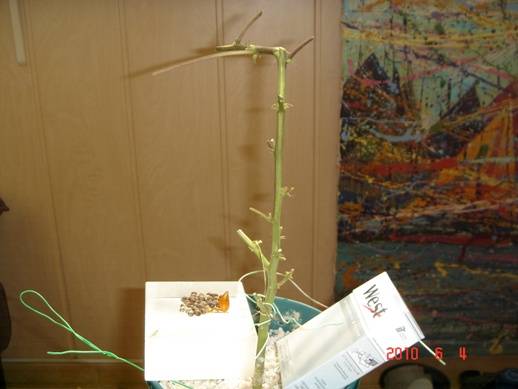
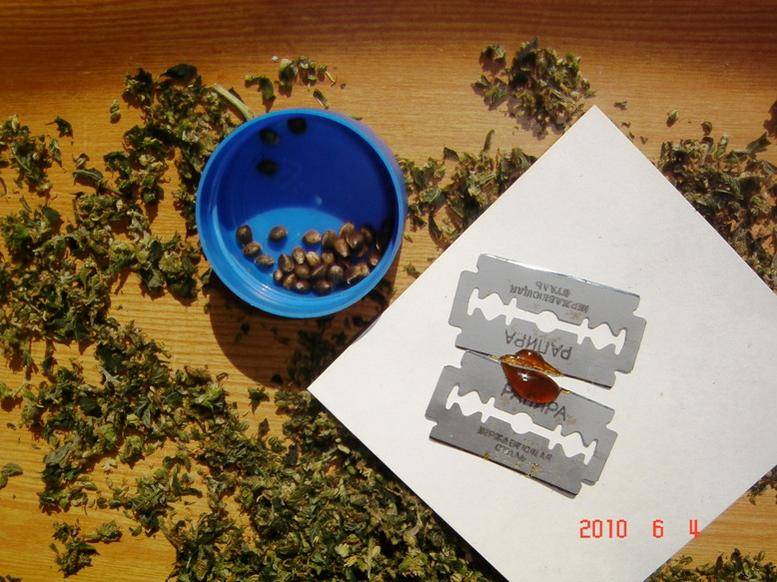
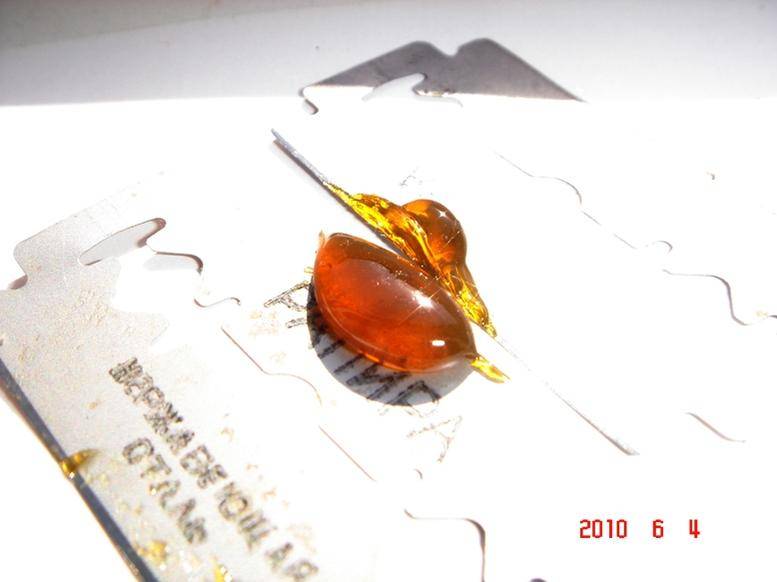
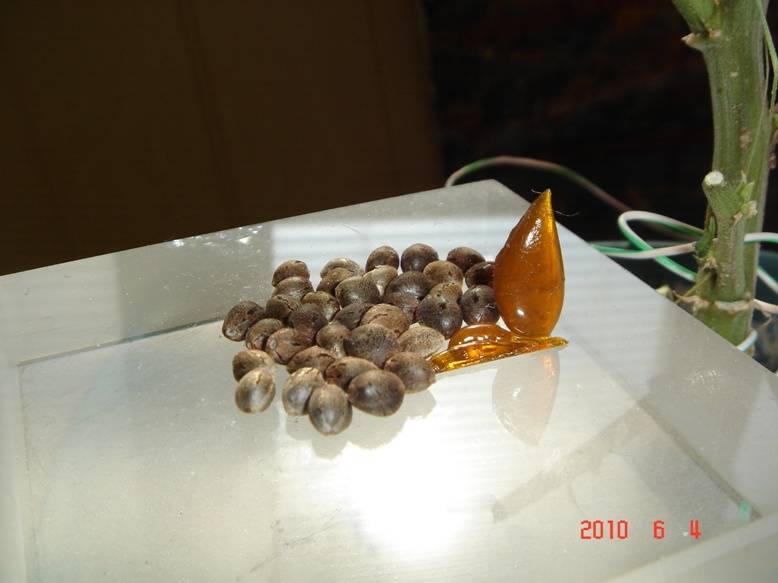
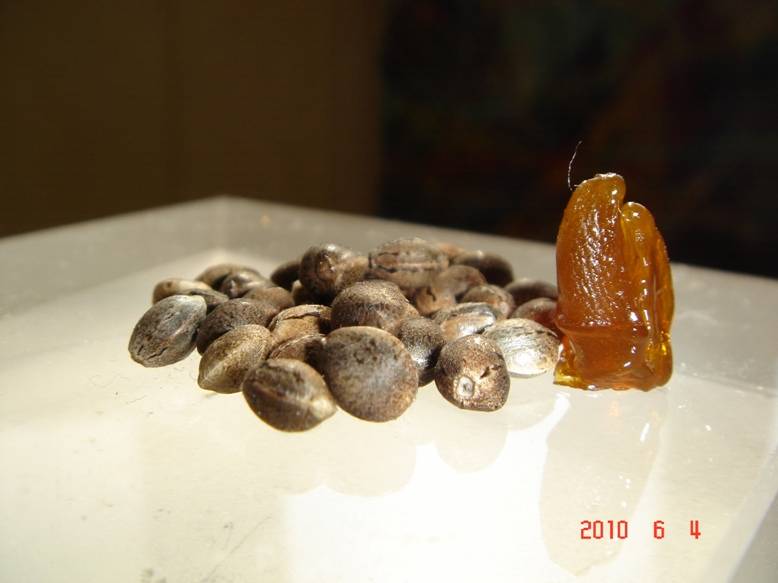
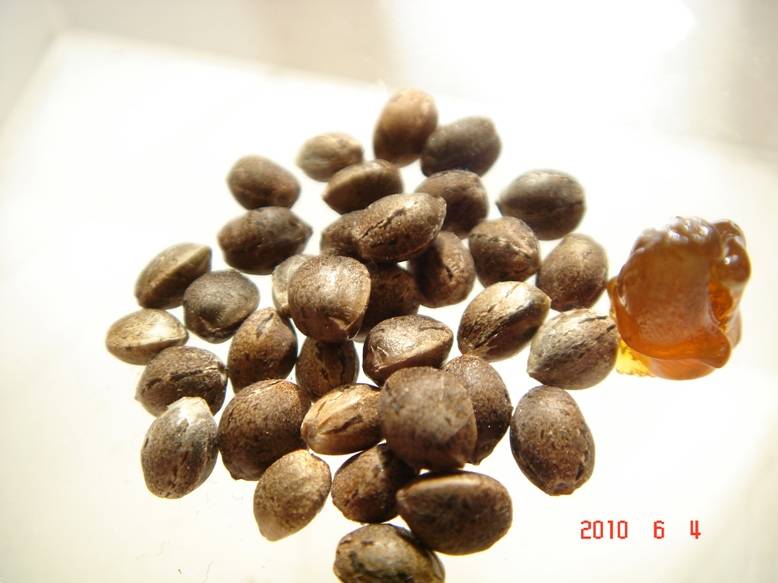
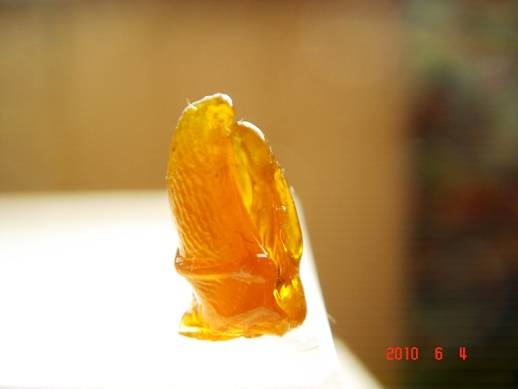
Maple Leaf three yields
This Maple_Leaf was not reversed in a whole. It had both active sexes and was yielded with both pollen and seeds.
34 fem seeds ML x SK, a little ML fem pollen and a piece of absolute amber extracted from separated ML flowers matter.
Absolute Decarboxylated
Absolute Decarboxylated
I had a couple of ambers like twins. I put one of them in flat-bottomed conical lab glass and placed in the oven for 20 minutes at 122C.
First amber melted into a puddle, five minutes later the whole puddle was covered with tiny bubbles, which in ten minutes gone.
I think that is carbon dioxide released during decarboxylation. I didn't pictured this now but before in "home-made charas".
Within the next 10 minutes to appear only rare microscopic bubbles.
I think extra time after bubbles gone was useless and harmful.
No bubbles, no decarboxylation, only oxydation.
Ex-twins to compare. The colour turns darker. Consistency changed from brittle amber for a thick sticky resin.
 .................
.................
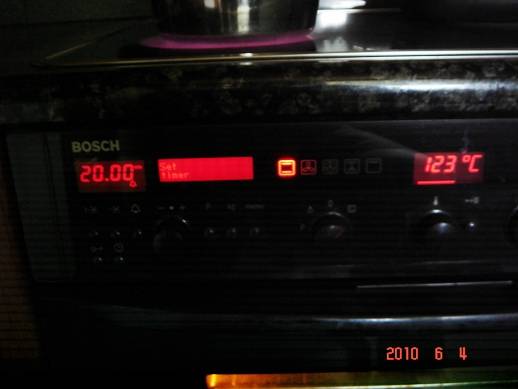
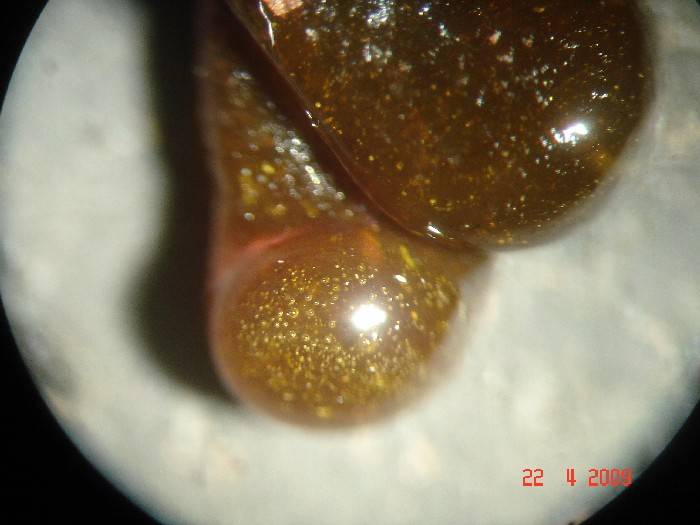 ..............
..............
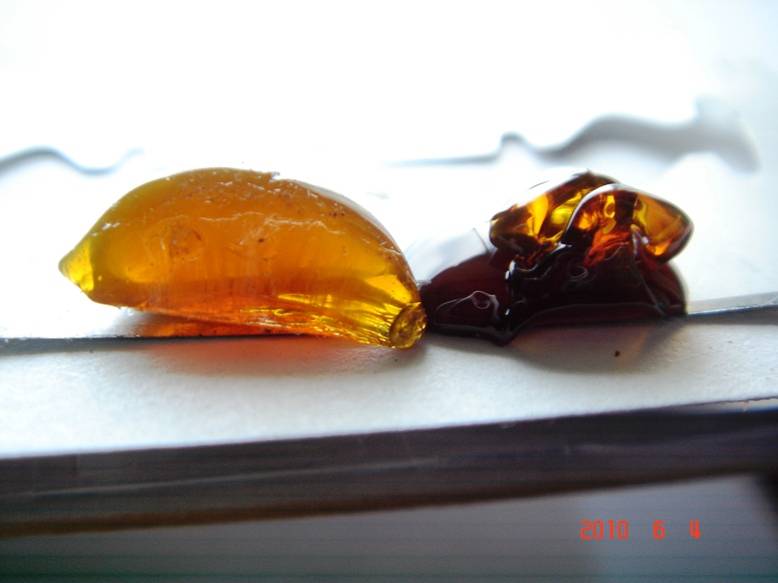
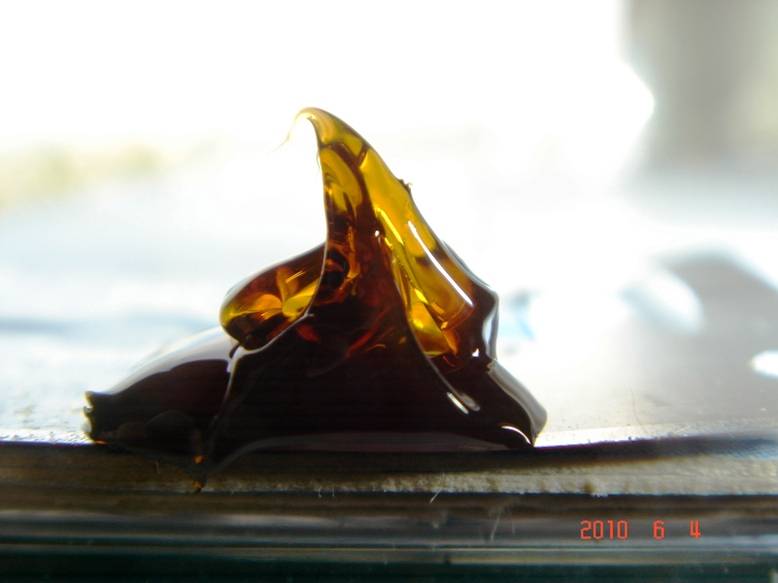
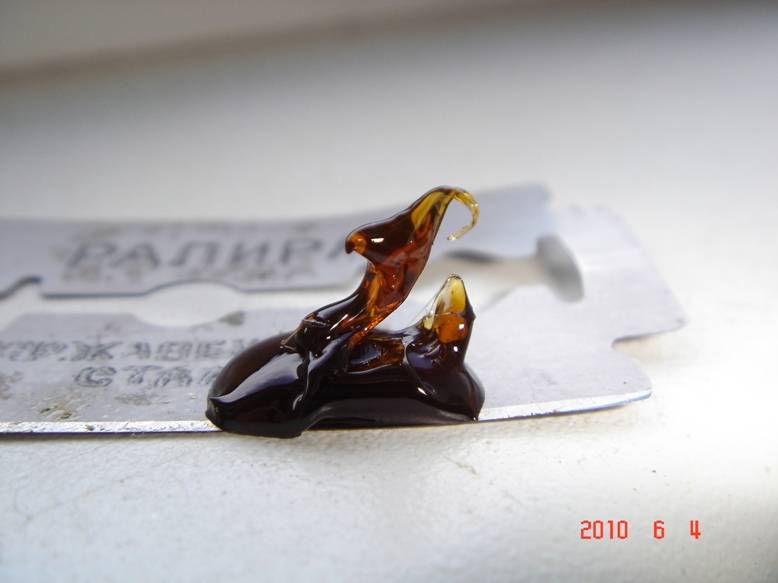
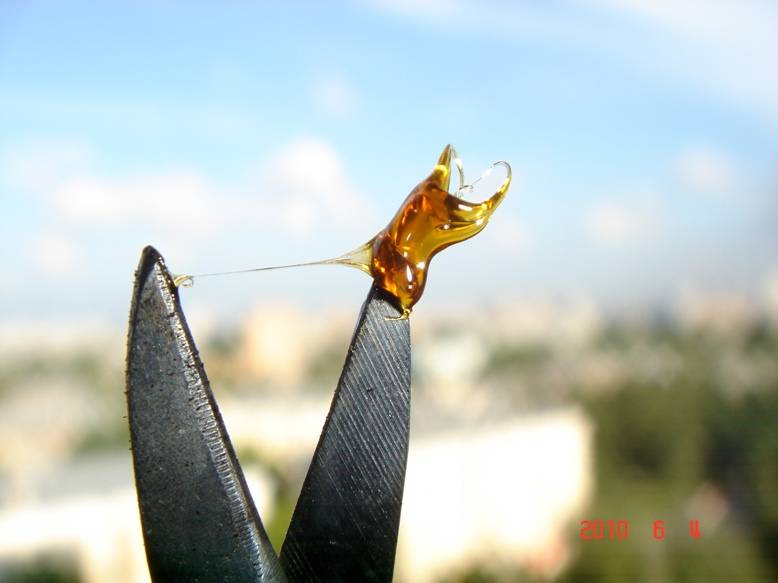
Absolute Decarboxylated is absolutely odorless.
Absolute Decarboxylated
I had a couple of ambers like twins. I put one of them in flat-bottomed conical lab glass and placed in the oven for 20 minutes at 122C.
First amber melted into a puddle, five minutes later the whole puddle was covered with tiny bubbles, which in ten minutes gone.
I think that is carbon dioxide released during decarboxylation. I didn't pictured this now but before in "home-made charas".
Within the next 10 minutes to appear only rare microscopic bubbles.
I think extra time after bubbles gone was useless and harmful.
No bubbles, no decarboxylation, only oxydation.
Ex-twins to compare. The colour turns darker. Consistency changed from brittle amber for a thick sticky resin.
Absolute Decarboxylated is absolutely odorless.
glassy THCA, runny THC
glassy THCA, runny THC
I use a flame of a lighter to soften and melt amber to operate with. As:
-to melt shards of amber together in one monolyth piece,
-to remaster shapes of a samples,
-to smooth sharp edges,
-to fix a sample in the position for taking the picture, side melt and stick like the thermo-fusible glue,
-to separate a part of an amber.
Amber can soften and melt without affecting its texture, after cooling it remains fragile.
Doing this I avoid the boiling that appears in a surface layer when overheated.
Sometimes it had happened as an accident.
Never before I correlated this to decarboxylation, neither analyzed consistency of accidentally overheated bubbled parts.
Now I observed the changes of the color and density of the amber after decarboxylation.
To check this observation a piece of amber was overheated from one end to the allocation of bubbles in the surface layer.
After the sample cooled to room temperature, I examined it with a microscope by manipulating the two needles.
Fragility was not restored to the overheated region after cooling.
This area turns to sticky thick resin with visible border between two phases (see macro).
It sticks to everything. Gossamer from the resin is living together with the movement of air,
while the spider from molten amber turns into a glass thread and breaks into pieces.
Newborn THC is watching you with its eyes of carbon dioxyde bubbles.
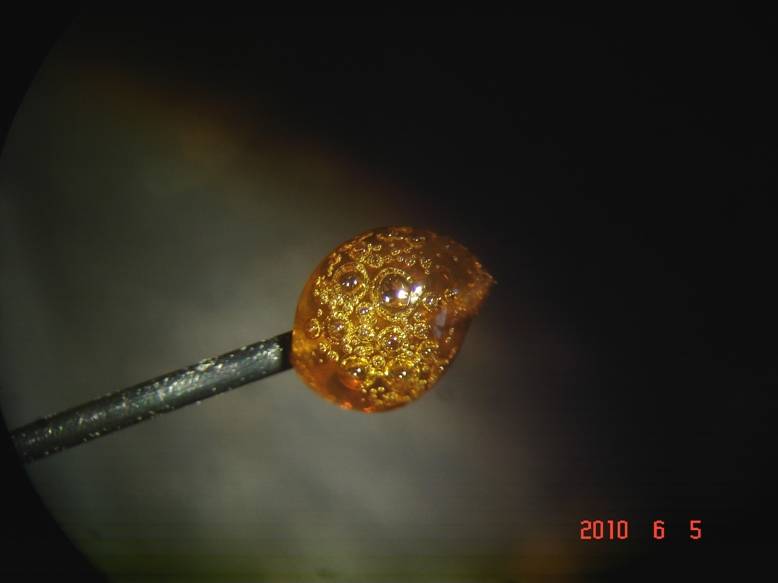
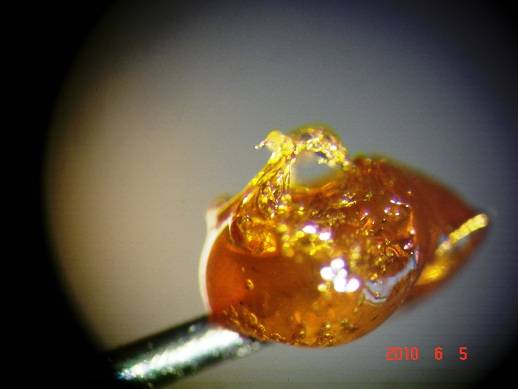
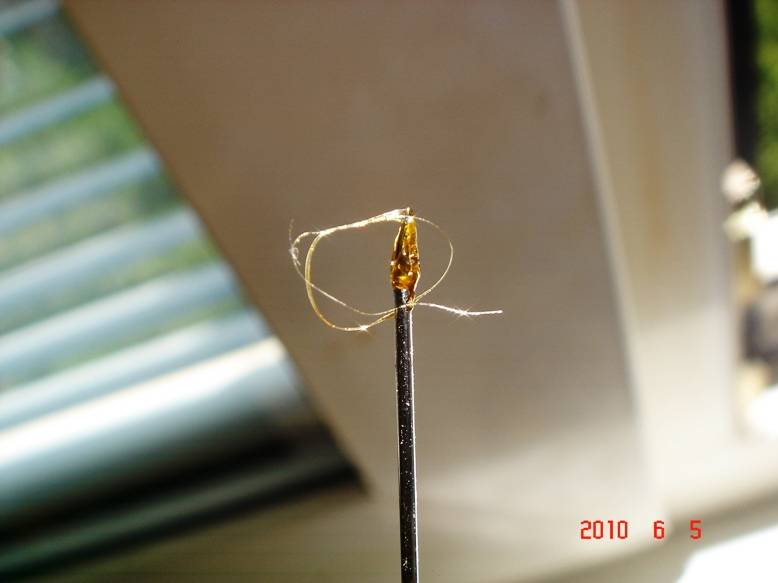
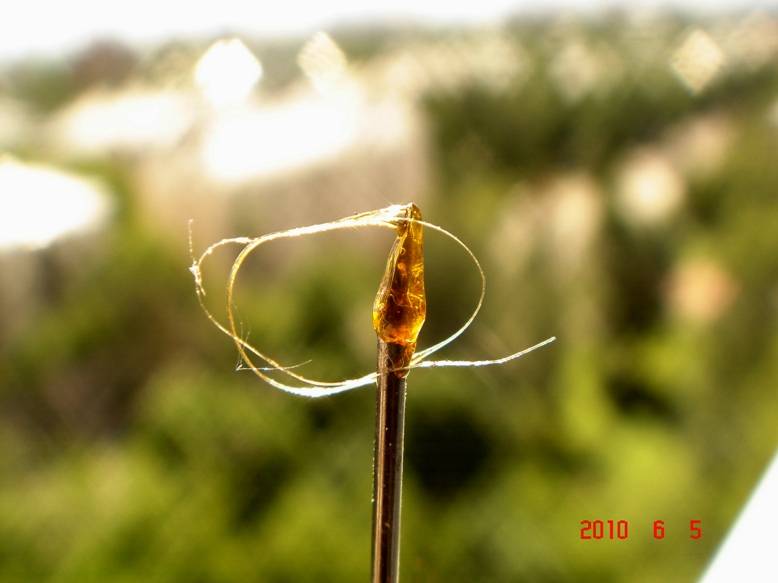
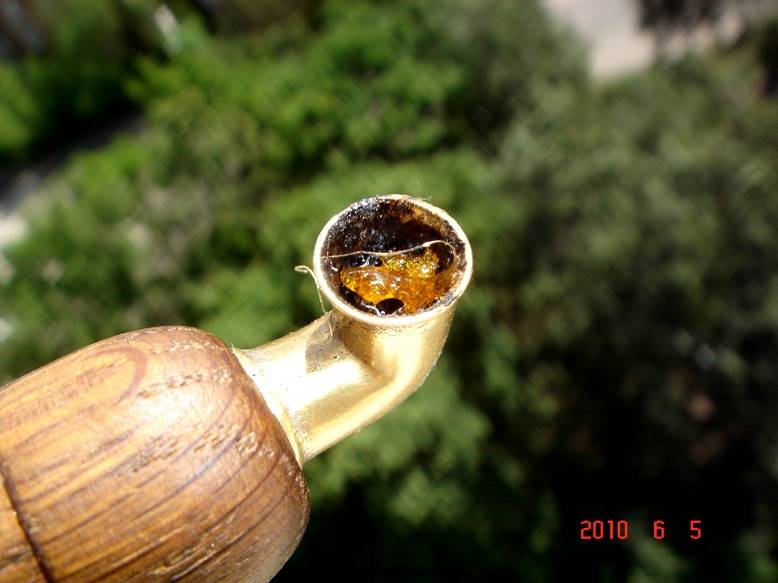
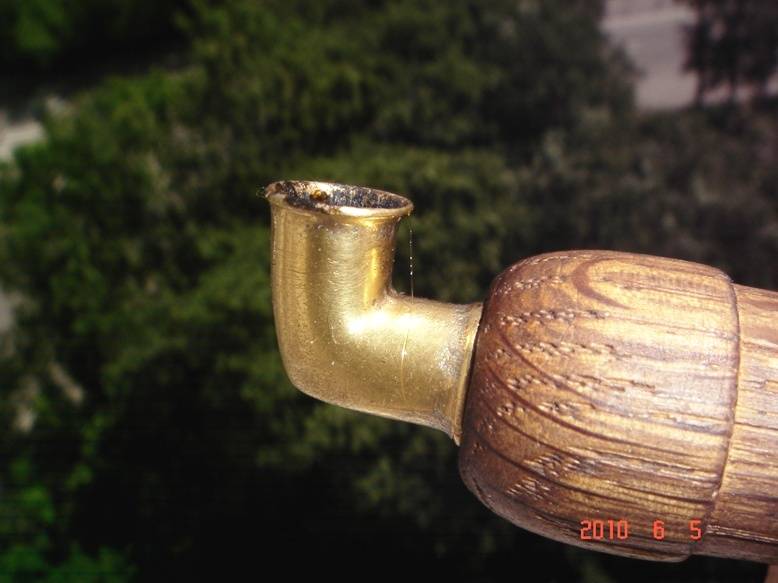
My assumption based on observation is that
-THCA may crystalize while THC may not.
-Presence of THC softens the stoned THCA resin.
-Extracts made from cured floral material with a high content of viscous THC are runny and can not be glassy.
-The glass amber can be extracted only from flowers with a high content of THCA and low or none THC.
Welcome to criticize or to confirm.
glassy THCA, runny THC
I use a flame of a lighter to soften and melt amber to operate with. As:
-to melt shards of amber together in one monolyth piece,
-to remaster shapes of a samples,
-to smooth sharp edges,
-to fix a sample in the position for taking the picture, side melt and stick like the thermo-fusible glue,
-to separate a part of an amber.
Amber can soften and melt without affecting its texture, after cooling it remains fragile.
Doing this I avoid the boiling that appears in a surface layer when overheated.
Sometimes it had happened as an accident.
Never before I correlated this to decarboxylation, neither analyzed consistency of accidentally overheated bubbled parts.
Now I observed the changes of the color and density of the amber after decarboxylation.
To check this observation a piece of amber was overheated from one end to the allocation of bubbles in the surface layer.
After the sample cooled to room temperature, I examined it with a microscope by manipulating the two needles.
Fragility was not restored to the overheated region after cooling.
This area turns to sticky thick resin with visible border between two phases (see macro).
It sticks to everything. Gossamer from the resin is living together with the movement of air,
while the spider from molten amber turns into a glass thread and breaks into pieces.
Newborn THC is watching you with its eyes of carbon dioxyde bubbles.
My assumption based on observation is that
-THCA may crystalize while THC may not.
-Presence of THC softens the stoned THCA resin.
-Extracts made from cured floral material with a high content of viscous THC are runny and can not be glassy.
-The glass amber can be extracted only from flowers with a high content of THCA and low or none THC.
Welcome to criticize or to confirm.
If this was a BHO thread everyone would say it's the terpene bubbles, and there's no telling them otherwise.
Cannabinoid acid extract made starting with the least polar solvent possible, then freed of most everything else by extracting into NaOH and so on, is a perfectly non-sticky dry powder. (Edit: GW Pharma says their 98% THCA melts at 70°C)
Keep up the good work!
Cannabinoid acid extract made starting with the least polar solvent possible, then freed of most everything else by extracting into NaOH and so on, is a perfectly non-sticky dry powder. (Edit: GW Pharma says their 98% THCA melts at 70°C)
Keep up the good work!
it may not be terpene bubbles, but they sure aint butane bubbles, thats what people really go on about often and are full of shit about.i dont know for sure they are terpene bubbles, but i DO KNOW that if you evaporate most of the bubbles out of a plate of butane extract, you lose a lot of the flavor component. so either some or all the bubbles are terpenes offgassing, or they offgass as a vapor with no bubble formation. that seems unlikely.
greenIrie
New member
-The glass amber can be extracted only from uncured flowers with a high content of THCA and low THC. [/COLOR][/SIZE][/FONT]
I've gotten solid shatter off buds that were cured for 12+ months many times.




